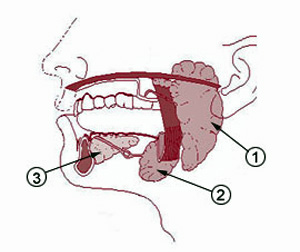Manufacturers of sleeping pills with an active ingredient called zolpidem are
being forced by the U.S. Food and Drug Administration (FDA) to reduce the
current recommended dose of the medications. This measure comes following new
evidence showing that the zolpidem blood levels of some people the day after
taking the medications can severely impair their alertness and ability to
perform tasks, such as driving or handling machinery.
Zolpidem remains in the blood the morning after taking it. By lowering the recommended dose of drugs with the ingredient inside, the blood level of zolpidem the morning after will be reduced. Women take longer than men to flush the ingredient from their system, the FDA has stated that the dosage for women will therefore be less than for men. Patients taking the extended-release forms of these drugs have the highest levels of the ingredient in their blood.
The FDA warns health care professionals of the importance in assuring that patients on these medications are completely aware of the risks associated with zolpidem.
For women, the recommended dosage of zolpidem found in instant release drugs (Edular, Ambien) will be lowered from 10 mg to 5mg, for extended-release drugs it will be lowered from 12.5 mg to 6.25 mg. Although men are able to eliminate the ingredient faster, the FDA still encourages doctors to consider prescribing the same dosages that are recommended to women.
According to Ellis Unger, M.D., director, Office of Drug Evaluation I in the FDA's Center for Drug Evaluation and Research:
Morning drowsiness and impaired alertness is not exclusively associated with zolpidem, the FDA reminded the public that there are many other insomnia drugs that also have the same side effect.
Those who are currently taking 10 mg or 12.5 mg doses of medications with zolpidem should carry on with their prescribed dose before talking to their doctor who will evaluate how to continue with the drug. People on the medication need to talk to their doctors to find an appropriate dose.
The change comes after a laboratory study and driving simulation revealed an increased risk of motor vehicle accident while zolpedim is still in a person's blood, as may occur the morning after taking some insomnia medications.
Dr. Unger. concluded:
More research will be carried out by the FDA to fully understand the risks of all the other insomnia drugs on the market.
A previous study published in Behavior Therapy revealed that in some instances, taking insomnia medication is not the best form of therapy in the long run, due to it's numerous side effects.
Zolpidem remains in the blood the morning after taking it. By lowering the recommended dose of drugs with the ingredient inside, the blood level of zolpidem the morning after will be reduced. Women take longer than men to flush the ingredient from their system, the FDA has stated that the dosage for women will therefore be less than for men. Patients taking the extended-release forms of these drugs have the highest levels of the ingredient in their blood.
The FDA warns health care professionals of the importance in assuring that patients on these medications are completely aware of the risks associated with zolpidem.
For women, the recommended dosage of zolpidem found in instant release drugs (Edular, Ambien) will be lowered from 10 mg to 5mg, for extended-release drugs it will be lowered from 12.5 mg to 6.25 mg. Although men are able to eliminate the ingredient faster, the FDA still encourages doctors to consider prescribing the same dosages that are recommended to women.
According to Ellis Unger, M.D., director, Office of Drug Evaluation I in the FDA's Center for Drug Evaluation and Research:
"To decrease the potential risk of impairment with all insomnia drugs, health care professionals should prescribe, and patients should take, the lowest dose capable of treating the patient's insomnia. Patients who must drive in the morning or perform some other activity requiring full alertness should talk to their health care professional about whether their sleep medicine is appropriate."
Morning drowsiness and impaired alertness is not exclusively associated with zolpidem, the FDA reminded the public that there are many other insomnia drugs that also have the same side effect.
Those who are currently taking 10 mg or 12.5 mg doses of medications with zolpidem should carry on with their prescribed dose before talking to their doctor who will evaluate how to continue with the drug. People on the medication need to talk to their doctors to find an appropriate dose.
The change comes after a laboratory study and driving simulation revealed an increased risk of motor vehicle accident while zolpedim is still in a person's blood, as may occur the morning after taking some insomnia medications.
Dr. Unger. concluded:
"Over the years FDA has received spontaneous adverse event reports of driving impairment and motor vehicle accidents associated with zolpidem, but these reports lacked the information necessary to fully understand whether and how zolpidem affected people's mental alertness and ability to drive. Recently, data from clinical trials and other types of studies have become available, which allowed FDA to better characterize the risk of next-morning impairment."
More research will be carried out by the FDA to fully understand the risks of all the other insomnia drugs on the market.
A previous study published in Behavior Therapy revealed that in some instances, taking insomnia medication is not the best form of therapy in the long run, due to it's numerous side effects.
